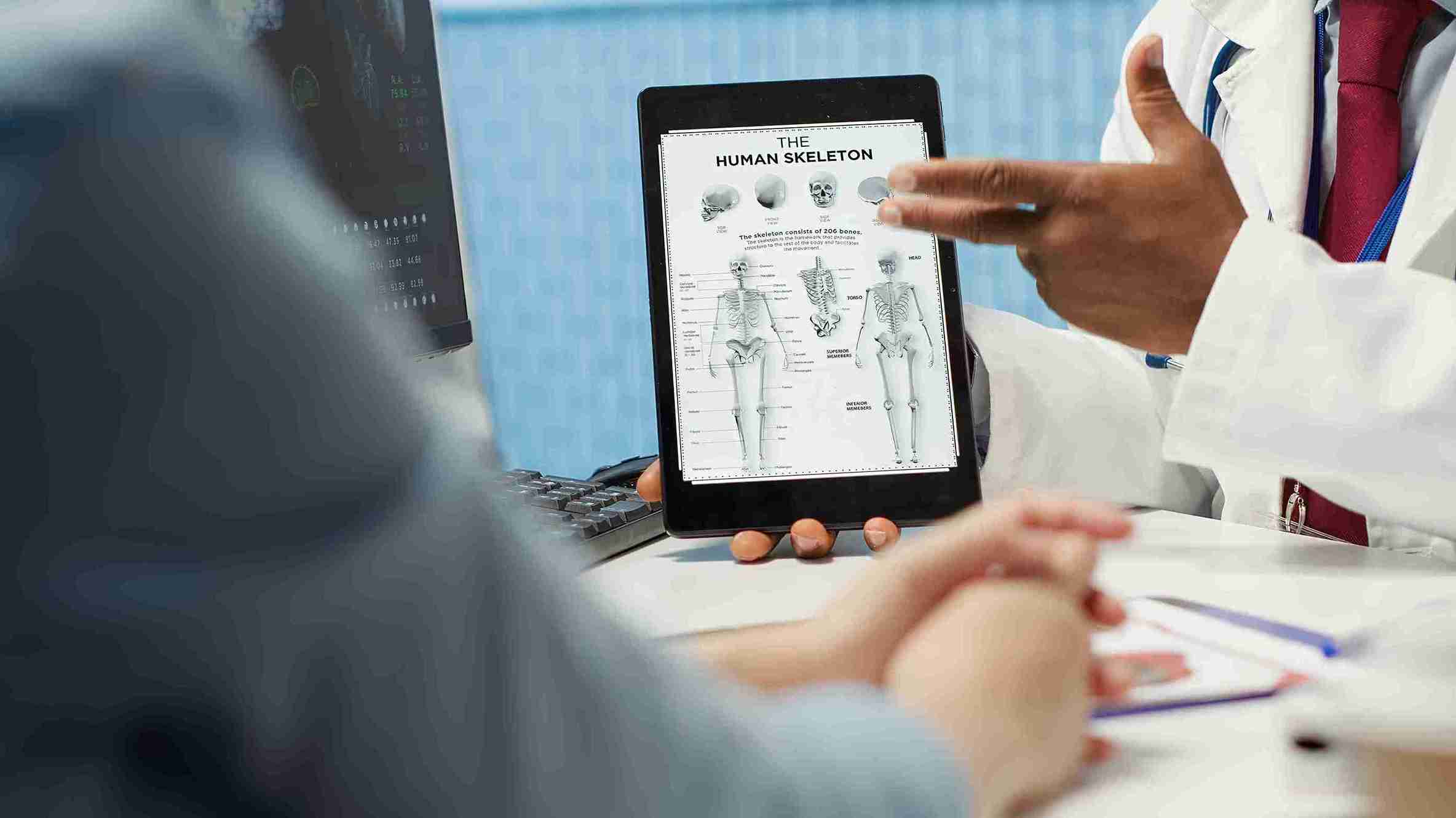In the current fast-paced digital age, technology plays an integral part in our everyday lives. From work to leisure, a lot of us are glued to the midst of screens. However, the use of technology without adhering to ergonomic guidelines could lead to physical pain, discomfort and even long-term health problems. With the help of some basic ergonomic principles to optimize our workplaces and enhance our overall health.
This guide outlines the most effective ergonomic techniques for using technology that cover everything from desk setup and posture to the best equipment and wellness tips. No matter if you work from the office or at your home, these tips will allow you to remain in a comfortable position while reducing strain and increasing your overall productivity.
1. General Ergonomic Guidelines for Technology Use
The base of a relaxing workspace begins with the desk layout. If you design it correctly, your workspace can dramatically lower physical pressure and improve productivity. Here’s how you can optimize your workspace:
Proper Desk Setup for Computer Use
The desk should be an appropriate height that allows your arms to rest at 90 degrees when typing comfortably. Your screen should be at eye-level, as well as the computer and keyboard, and should be set in a way that your wrists remain in a neutral and comfortable position.
Make sure your desk has enough room for your elbows to sit comfortably on your sides without straining or stretching. Strain. Think about a desk with adjustable heights for more optimal placement.
Adjusting Chair Height and Positioning
A high-quality chair can make a big difference. Set the chair’s height to ensure that your feet are flat on the ground as well as on the footrest, with your thighs in line with the ground. Your arms should sit at an angle of 90 degrees when you type.
Your chair’s backrest ought to offer support for your lumbar spine to help maintain good posture. This will help keep an ideal curve for your spine, and also reduce the strain on your back. Think about a chair that has adjustable features to provide the best comfort.
Screen Height and Angle for Better Posture
Your monitor should be set at eye level to reduce neck strain. The screen’s top should be at or just below eye level so that you don’t pull your neck back to view the screen.
The screen should be placed at a reasonable distance, about an arm’s distance from your eyes. A slight tilt of the screen can lessen glare and reduce eye strain.
Using Ergonomic Keyboards and Mice
Utilizing the ergonomic mouse or keyboard will greatly reduce the stress on your wrists as well as hands. You can consider a split keyboard, or one that has an angle that is negative to lessen wrist strain. An ergonomic mouse that has a natural grip can help maintain an even wrist position.
Avoiding overly gripping or awkward hand postures when utilising these tools is crucial to prevent repetitive stress injuries such as carpal tunnel syndrome.
Importance of Workstation Lighting
Lighting is an important part of the reduction of eye strain. Ideally, your workspace must be bright and not have glare on your monitor. Utilize indirect lighting that is soft and soft which reduces sharp contrasts. Set your desk far towards bright lighting sources, such as overhead lights or windows, to reduce eye fatigue.
Chair Support for Lumbar Health
A chair that has correct lumbar support can help maintain the natural curve of your spine, particularly in the back of your lower back. This is vital to avoid injuries and discomfort from prolonged sitting. Choose chairs that have an adjustable lumbar support, or look into adding a cushion or two to improve the comfort.
2. Posture and Movement

While a well-designed workplace is crucial, however, your posture and habits play an important role in your overall health. Here’s how you can stay in good shape throughout your day:
Maintaining a Neutral Wrist Position
When you type or use a mouse, make sure to ensure that your wrists are in a normal place, not bent upwards or downwards. The use of a wrist rest, or ergonomic mouse, can help keep your wrists in a more natural position while reducing stress on your muscles.
Importance of Regular Breaks and Stretching
In a single posture for a long time could cause muscular stiffness, fatigue and strain. Pause for a few minutes between 20 and 30 minutes, stretch or walk around and adjust your posture. Simple stretching exercises for your shoulders, back, and wrists can keep your muscles flexible and lessen tension.
Correct Sitting Posture While Using Technology
Your posture is vital to alleviating discomfort. Keep your back straight with shoulders in a relaxed position, your back straight and your feet straight on the flooring. Be careful not to slump or lean towards the front to ensure your spine remains in a neutral position.
Standing Desks or Alternate Work Positions
Include an upright desk in your daily routine if you can. Desks that stand up allow you to change between standing and sitting and reduce the risk associated when you sit for a long time. If you don’t have a standing desk as an option, you could consider a convertible desk that permits you to change locations all day long.
Avoiding Eye Strain and Proper Screen Distance
Looking at screens for too long may cause fatigue and eye strain. To avoid this, follow the 20-20-20 rule. Every 20 minutes, you should look at something that is 20 yards away for at least 20 seconds. This can help reduce eye strain and allow your eyes a chance to relax.
3. Equipment and Technology

The best equipment can increase your comfort and efficiency. These are some of the ergonomic tools to take into consideration:
Technology with ergonomic designs, Gadgets (Keyboard and Mouse, etc.)
A lot of modern technology devices are designed with ergonomics at the back of their minds. Pick devices that have an ergonomic mouse, keyboard, or trackpad to promote an ergonomic hand position and decrease wrist strain. Choose products made to reduce the chance of injuries from repetitive stress.
Adjustable Stands and Monitors
Adjustable monitor stands permit you to place your monitor at eye level, thus reducing the strain on your neck and eyes. Stands can even offer the possibility of adjusting both the angle and height, and provide flexibility in the way you place your screen.
The Role of Noise-Canceling Headphones in Maintaining Focus
The noise-canceling headphones aren’t just to be used for entertainment, but can also serve as an excellent ergonomic tool for the workplace. By reducing background noise, these headphones allow you to remain focused and reduce the physical strain that results from trying to concentrate in an environment that is noisy.
Ergonomic Accessories for Improved Comfort
The investment in ergonomic products such as lumbar and wrist cushions, as well as footrests, can create a huge improvement in your level of comfort. These accessories help you maintain your proper posture and decrease the chance of developing musculoskeletal problems.
Importance of Ergonomic Workstations for Remote Workers
If you work remotely, establishing an ergonomic workspace is essential. As opposed to working in a workplace, it is not possible to have an ergonomic workspace that is designed for use at home. But, with a bit of thinking, it’s possible to make an ergonomic and healthy environment using ergonomic guidelines.
4. Health and Wellbeing

Ergonomics doesn’t just concern comfort; it’s about protecting your health. This is how the principles of ergonomics can contribute to longevity and wellbeing.
Prevention of Carpal Tunnel Syndrome with Ergonomic Tools
Carpal tunnel is one of the most typical repetitive strain injuries that could be prevented with ergonomic devices. A proper keyboard position as well as a neutral wrist posture as well and regular breaks will ensure your wrists are in good shape.
Preventing Back and Neck Pain Through Posture Correction
Proper posture can dramatically reduce the chance of suffering from neck and back discomfort. Maintaining your spine in alignment and taking frequent breaks to stretch can help reduce tension in your joints and muscles.
The Role of Ergonomics in Reducing Eye Strain and Headaches
Ergonomic methods, such as proper screen spacing, proper lighting and frequent breaks for the eyes, can decrease the chance of experiencing headaches and strain on the eyes. If you often experience headaches or discomfort in your eyes, changing your workplace setup could offer relief.
Stress Reduction Through Ergonomic Technology Design
Ergonomically designed technology can reduce physical stress that could result in chronic discomfort. With the use of ergonomic devices that reduce stress, you can lower stress levels and enhance your physical and mental wellbeing.
5. Best Practices and Recommendations

To get the most value out of your ergonomic equipment, be sure to follow these guidelines:
Recommended Daily Screen Time and Breaks
The American Academy of Ophthalmology recommends restricting screen time to two hours for each session and having breaks at intervals of 20 minutes. Regular breaks can help reduce the adverse effects of extended screen time, like muscle stiffness and strain in the eyes.
Ergonomic Guidelines for Mobile Device Use
If you are making use of mobiles, keep them near your eyes to avoid straining your neck. Utilize stands or props to hold the device to prevent the risk of hunching over. Pause frequently to relax your eyes and move your muscles.
Setting Up an Ergonomic Home Office
If you are working at home, make sure you take the time to create an ergonomic workspace. Select a comfortable chair, an adjustable desk and ergonomic equipment. Set up a well-lit and organised workspace that enhances your wellbeing and productivity.
Benefits of Ergonomic Technology Use for Long-Term Health
Deciding to adopt ergonomics early can prevent chronic health issues like chronic eye strain, pain and repetitive strain injuries. Making ergonomics a priority in your technology usage not only increases ease of use but also increases your overall health and wellbeing.
Final Thoughts
In the modern world of technology, adhering to ergonomic guidelines for technology usage is more than just a great idea. It’s crucial to your health. When you’re at work or using your smartphone, and even working from home, making a few modifications to the way you use technology can reduce injuries and chronic health problems.
Ergonomics doesn’t need to be difficult. It’s about being better and not working more. Make adjustments to your posture, make regular breaks, and set up the right environment to support your body.
Begin by making a tiny ergonomic modification today. In time, these easy routines will result in more health and ease of use, and improved productivity.
FAQs:
Q1: What is your most crucial ergonomic advice for computer users?
Maintain your spine straight. Keep the watch at eye level, and the wrists should be in a neutral position to lessen strain.
Q2: How can I lessen the strain on my eyes from screens?
Use the 20-20-20 rule to alter your lighting, and ensure that your screen isn’t too bright nor dark.
Q3: Can poor ergonomics cause permanent damage?
Ignoring ergonomics can indeed cause chronic health issues like chronic back pain, carpal tunnel syndrome and vision issues.
Q4: How can I make my phone more ergonomic?
Maintain the hand at eye level. Use voice commands whenever you can and make frequent breaks to avoid hand strain and neck strain.
Q5: What do I do if I have to work for a long time at the desk?
Create an ergonomic workspace, be sure to stretch regularly, and schedule breaks to keep your body healthy and prevent fatigue.











Leave a Comment